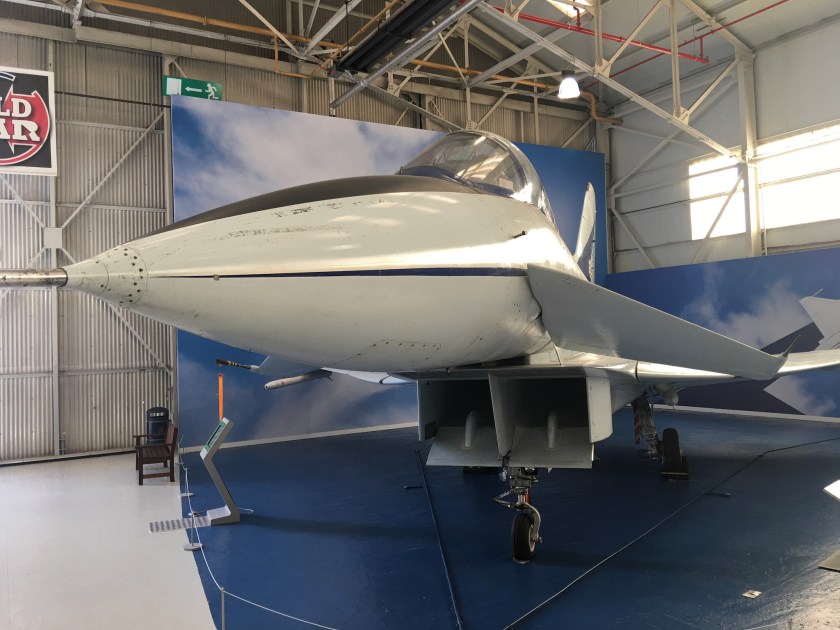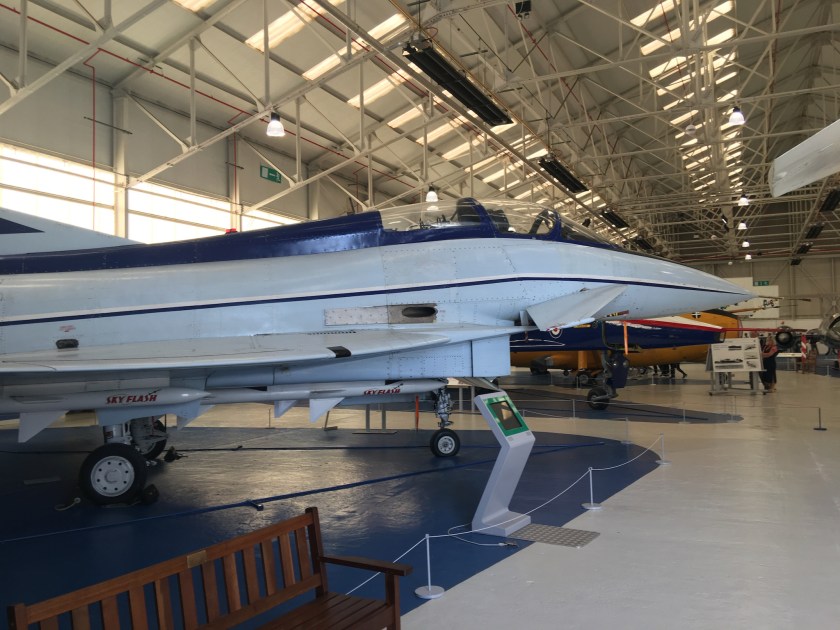This V2 missile was on display at RAF Cosford.
It is one of several rockets prepared by the British with support from German troops during Operation Backfire. It so happened that this rocket was not launched during the Backfire tests. Operation Backfire was a military scientific operation during and after the Second World War that was performed mainly by British staff. The operation was designed to completely evaluate the entire V-2 rocket assembly, interrogate German personnel specialised in all phases of it and then to test and launch missiles across the North Sea.
The V2 was the world’s first long range guided ballistic missile. he missile, powered by a liquid-propellant rocket engine, was developed during the Second World War in Germany as a “vengeance weapon”, assigned to attack Allied cities as retaliation for the Allied bombings against German cities.














